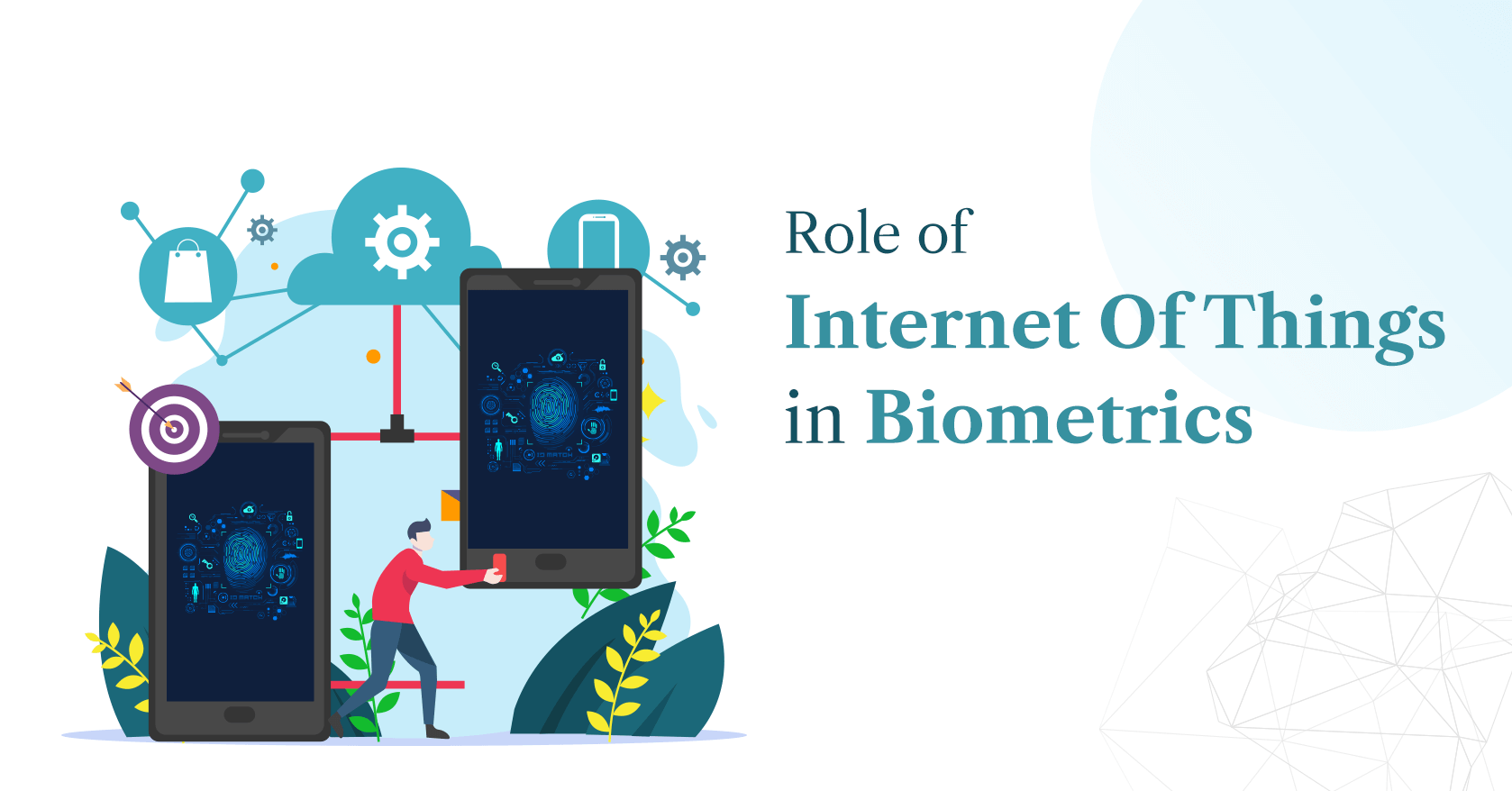Biometrics and the Internet of Things (IoT): Securing a Connected Future
Introduction
In the age of digital transformation, the Internet of Things (IoT) has emerged as a powerful force that connects devices and enables seamless communication between them. From smart homes to industrial automation, the IoT has revolutionized the way we live and work. However, this interconnectedness also brings significant security concerns. The use of biometrics, the unique physical or behavioral characteristics of individuals, presents a promising solution to enhance the security of the IoT ecosystem. In this blog post, we will explore the intersection of biometrics and the IoT and delve into the implications of this combination for securing a connected future.
The Growing Significance of Biometrics
Biometrics involves the identification or verification of individuals through their unique biological or behavioral traits. This technology has gained immense popularity in recent years due to its accuracy, convenience, and reliability. Traditional authentication methods such as passwords and PINs are prone to vulnerabilities, as they can be stolen, forgotten, or easily hacked. Biometrics, on the other hand, provide a highly secure and personalized authentication mechanism.
Fingerprint recognition, facial recognition, iris scanning, voice recognition, and even heartbeat patterns are some common examples of biometric identification. These traits are unique to each individual and difficult to forge or replicate. By leveraging biometrics, organizations can enhance security while ensuring a seamless user experience, making it an ideal choice for the IoT landscape.
Securing the IoT with Biometrics
The IoT brings together a vast array of devices, ranging from small sensors to complex machines, all connected to the internet. With this interconnectivity, the security of these devices and the data they transmit becomes paramount. Here’s how biometrics can play a crucial role in securing the IoT:
- User Authentication: Biometrics can replace traditional authentication methods such as passwords and PINs in IoT devices. By incorporating fingerprint or facial recognition, users can easily and securely authenticate themselves, eliminating the risk of unauthorized access. Biometrics also provide continuous authentication, ensuring that only authorized individuals can interact with the connected devices.
- Device Security: Biometric sensors can be integrated into IoT devices themselves, adding an additional layer of security. For instance, a smart lock equipped with a fingerprint scanner ensures that only authorized individuals can unlock the door. Biometrics can also be used to secure wearable devices, preventing unauthorized access to personal data.
- Data Encryption: Biometrics can be utilized to encrypt data transmitted between IoT devices, ensuring its integrity and confidentiality. Biometric-based encryption keys can be generated using unique user characteristics, making it extremely difficult for malicious actors to intercept or manipulate the data stream.
- Behavioral Monitoring: Biometrics extend beyond physical traits and can include behavioral characteristics such as gait or typing patterns. By analyzing these patterns, IoT systems can detect anomalies and identify potential security breaches. For instance, if a smart home recognizes an unfamiliar gait pattern, it can raise an alert and prompt further authentication.
Challenges and Considerations
While biometrics offer great potential for securing the IoT, several challenges and considerations must be addressed:
- Privacy Concerns: Biometric data is highly personal and requires stringent privacy protection. Organizations must adhere to strict privacy regulations and ensure that user data is securely stored, processed, and shared only with explicit consent.
- Accuracy and Reliability: Biometric systems must be accurate and reliable to avoid false positives or negatives. Factors such as environmental conditions, aging, or injuries can impact the accuracy of biometric recognition, necessitating robust algorithms and regular system updates.
- Scalability and Interoperability: As the number of IoT devices continues to grow, biometric systems must be scalable and interoperable across various platforms and devices. Standards and protocols need to be established to ensure seamless integration and compatibility.
- Spoofing and Attacks: Biometric systems can be susceptible to spoofing attacks, where malicious actors attempt to replicate or deceive the recognition process. Organizations must employ robust anti-spoofing techniques, including liveness detection and multi-factor authentication, to mitigate these risks.
- Seamless User Experience: Biometrics offer a convenient and frictionless user experience in the IoT environment. With a simple touch, glance, or voice command, users can effortlessly interact with connected devices, eliminating the need for cumbersome authentication processes. This seamless experience encourages widespread adoption and enhances user satisfaction.
- Biometric Templates and Encryption: Biometric data is typically stored as templates rather than the actual raw data. These templates are created through mathematical algorithms that extract unique features from the biometric traits. Storing templates instead of raw data adds an extra layer of security, as even if the stored information is compromised, it cannot be reverse-engineered to obtain the original biometric data.
- Multimodal Biometrics: Combining multiple biometric modalities, such as fingerprint and facial recognition, can significantly enhance the security of IoT devices. Multimodal biometrics provide a higher level of accuracy and reliability by reducing the risk of false positives or negatives. Furthermore, multimodal authentication can enhance accessibility by accommodating individuals with disabilities or those whose certain biometric traits may be temporarily unavailable (e.g., a facial recognition system that allows fingerprint fallback).
- Edge Computing and Biometrics: With the proliferation of edge computing in the IoT landscape, biometric data processing can be performed locally on the edge devices themselves. This approach offers advantages such as reduced latency, improved privacy, and increased reliability by minimizing dependence on cloud-based processing. Edge-based biometric authentication also allows for continued functionality even in the absence of an internet connection.
- Biometrics and Industrial IoT (IIoT): In industrial settings, the IIoT brings connectivity to critical infrastructure and machinery. By integrating biometrics, IIoT systems can ensure that only authorized personnel can access and operate these devices, mitigating the risk of unauthorized tampering or malicious activities. Biometrics can also play a role in improving worker safety by monitoring fatigue levels or detecting hazardous situations.
- Biometric Data Management: As biometric data becomes more prevalent in the IoT ecosystem, proper data management practices are essential. Organizations must establish robust data governance frameworks to protect biometric information, including secure storage, access controls, and encryption. Clear policies and guidelines regarding data retention, sharing, and disposal should be established to maintain user trust and compliance with privacy regulations.
Biomedical Engineering and Artificial Intelligence in Healthcare: Revolutionizing Patient Care
Conclusion
The Internet of Things (IoT) holds immense potential for transforming our lives, but it also presents significant security challenges. Biometrics offer a promising solution to enhance the security of the IoT ecosystem, providing secure and convenient authentication mechanisms. By leveraging unique physical or behavioral traits, organizations can ensure that only authorized individuals can access IoT devices and the data they generate. However, careful considerations must be given to privacy, accuracy, scalability, and protection against attacks to fully realize the benefits of biometrics in securing a connected future. With proper implementation and robust security measures, biometrics can pave the way for a safer and more efficient IoT landscape.











